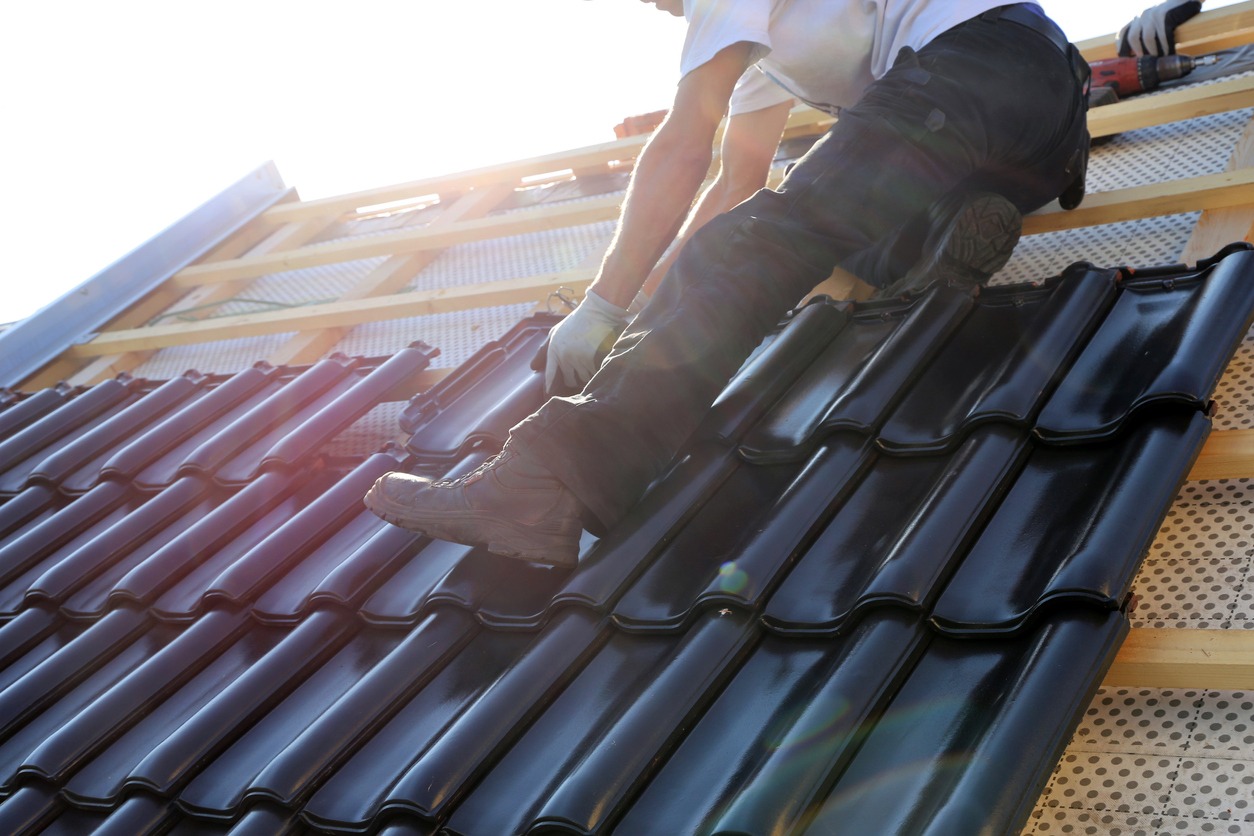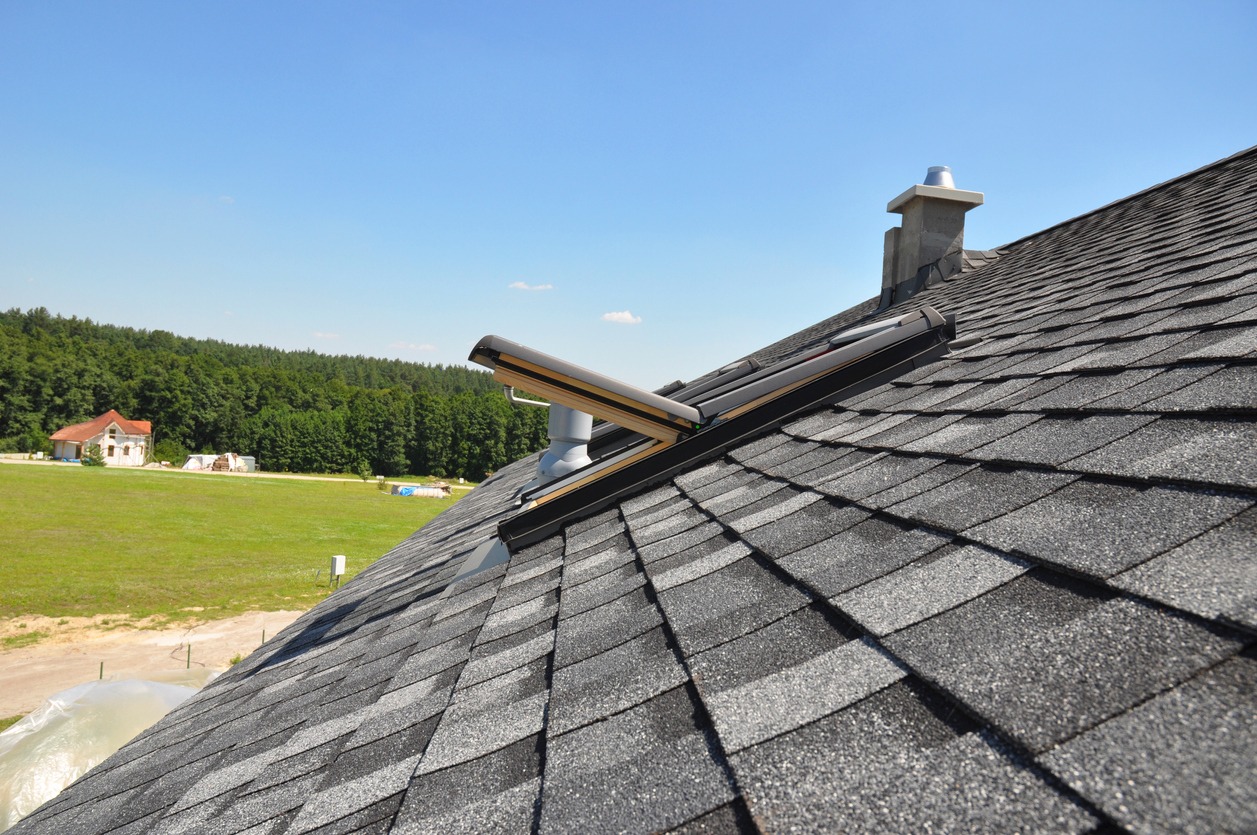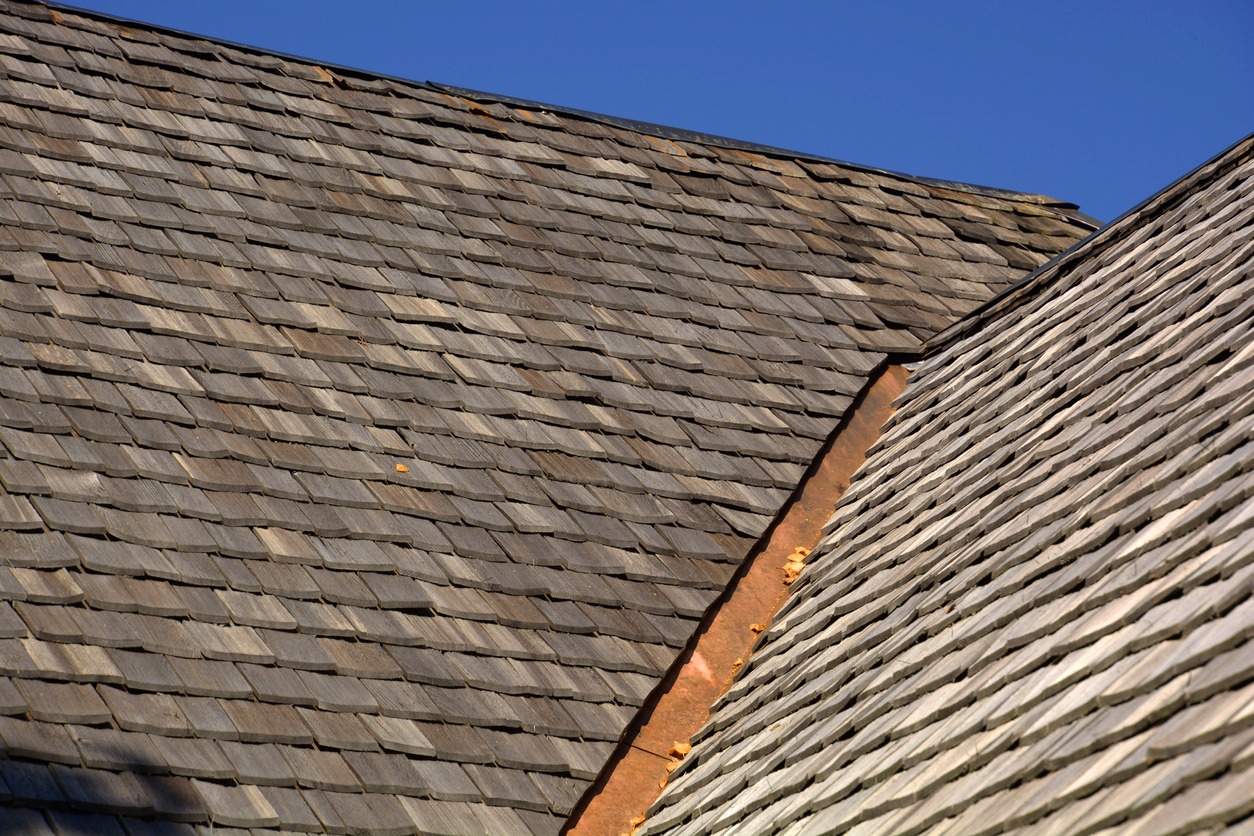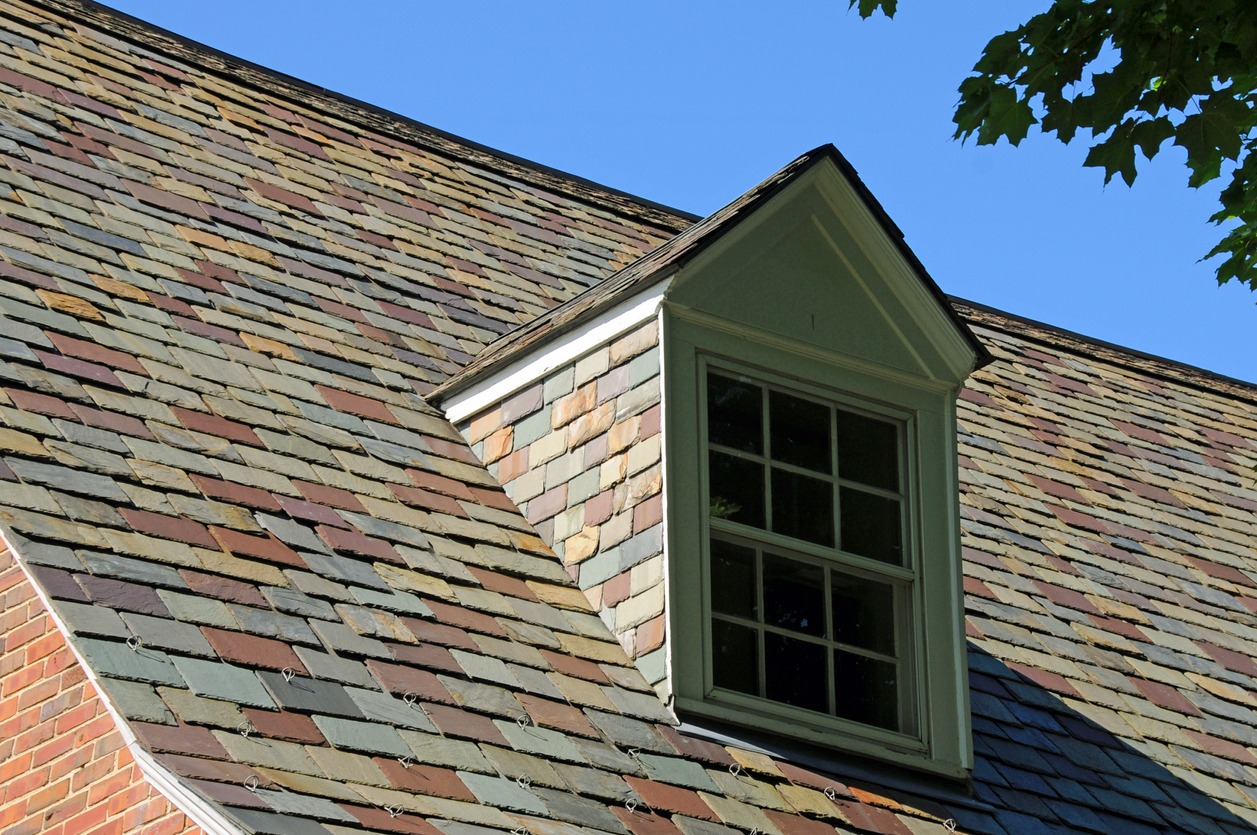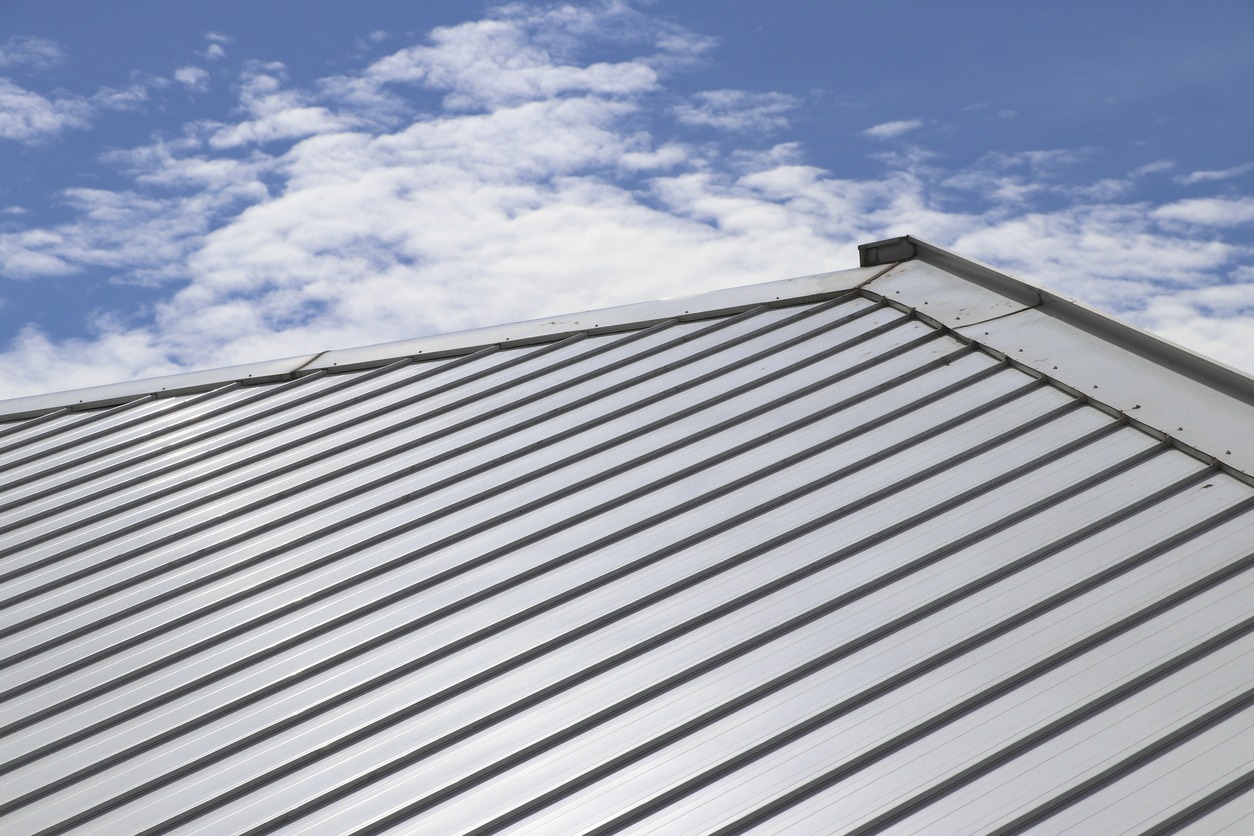Looking to replace your roof? Or are you building a new home? Remember that the roof is an incredibly important fixture. It protects you from the elements, enhances your home’s energy efficiency, and contributes to the overall look of your property.
You have several roofing materials to choose from, each with a different lifespan. Apart from how long they last, these materials come with their own pros and cons that can significantly impact your investment.
With many options out there, it’s important to understand the various materials and their merits. In this guide, learn all about it so you can make an informed decision.
Different Roofing Materials
Asphalt Shingles
Asphalt shingles are a popular roofing choice due to their affordability and ease of installation. They come in various colors and styles, offering versatility for different architectural designs. It is usually made of a fiberglass base that has been submerged in asphalt and is coated with mineral grains to make it durable. But these days, you can also find organic asphalt shingle varieties made of paper, ceramic, and asphalt.
Asphalt shingles are commonly available in two categories: architectural shingles and three-tab shingles. Architectural shingles offer greater durability with two or three layers, while three-tab shingles are more affordable but have a single layer.
While asphalt shingles are suitable for roofs with tricky flashing needs and offer unique color options, they might not be ideal for regions with extreme temperature shifts or high humidity, as they can warp, crack, or develop moss and algae growth. It’s important to consider these factors when choosing the right roofing material for your home.
It’s a great option if you have roof details that come with tricky flashings if your roof has a curved design, and if you want unique color options to choose from. Also, they are easy to install, and you can even DIY it.
However, they might not be as durable as other options and have a shorter lifespan. Asphalt shingles can last up to 20-30 years with proper maintenance, unlike other materials that can last for longer. They may also need more frequent repairs and replacements.
Pros:
- Affordable and easy to install
- Available in a wide range of colors and styles
- Durable with up to a 30-year warranty
- Class A fire resistance (resistant to fire for up to two hours)
- Readily available at most home improvement stores
Cons:
- Shorter lifespan compared to other roofing materials
- Vulnerable to strong winds, heat, and storm damage
- Not considered environmentally friendly due to high greenhouse gas emissions during production
- Not advisable for humid climates as it can grow moss or algae
Wood Roofing
Wood roofing is another popular roofing option. hIt provides a natural and rustic appearance made from materials like cedar or redwood, adding some character and charm to houses. These materials are common in older homes or houses with more classic architectural styles. They are made from all-natural materials and are recyclable.
Wood roofing is pricier than asphalt shingles but provides more durability, lasting between 30 to 50 years with proper care. However, it’s important to note that wood roofing might not suit all climates due to susceptibility to rot and insect damage in damp conditions.
Wood roofs come in two types: shingle and shake. Shingles are machine-made, so each is similar in size and shape, while shake roofing is hand-split from wooden blocks, giving a more rustic look. Many people enjoy this roofing material because of the weathered look it develops as it ages.
However, this type of roof is only gorgeous for the right house. It can mold, rot, grow moss, or suffer from insect damage if used in a region with an inappropriate climate. But even if used in a climate suited for wood, it’s still a relatively high-maintenance material to prevent these issues. It may also catch fire in fire-prone or arid areas, so it will require additional fire-retardant measures.
Pros:
- It provides a natural and charming look, especially for older homes
- Made from all-natural and recyclable materials
- It acts as a good insulator and allows for ventilation
- It can last 30 to 50 years, depending on the factors
- Aesthetic appeal with a natural look
- Lightweight yet strong, providing moisture protection
Cons:
- Higher cost and installation complexity compared to some other materials
- Requires more maintenance, including fire retardation and treatments to prevent issues like mold and rot
- Requires periodic treatments to prevent drying, warping, and mildew
Slate Roofing
Slate roofing is a high-end choice valued for its lasting quality. It provides a classic touch to homes, particularly those with a traditional or high-end architectural style. Made from natural stone, it can endure for over 100 years with proper care. Its resilience, insulation benefits, and timeless appearance make it a coveted roofing material. It’s resistant to fire, rot, and insects and is available in various colors and styles.
Slate ranges in color from dark gray to reddish brown and can be cut in different shapes. Square slate and shingles are the most common, but there are also rounded or diamond-cut slates.
The life expectancy of slate roofing depends on the quarry where the slate came from. Slate mined in Pennsylvania is expected to last at least 50 years. Buckingham slate from Virginia can last up to 175 years, while Vermont slate roofs can last more than 200 years.
Yet, its steep cost, limited availability, and complex installation might only make it the best fit for some homeowners. Also, it’s very heavy, so your house may need extra structural support to bear its weight.
Pros:
- Elegant and enduring natural stone material
- Highly durable, fire-resistant, and low-maintenance
- It comes in different colors and shapes
- It lasts for decades, even up to 100 years or more
Cons:
- Pricey and requires professional installation
- Heavier, needing suitable support for the roof’s weight
- It might not be practical for homes with less steep slopes
Tile Roofing
Tile roofing is a popular choice in specific regions. Made from materials like clay or concrete, these tiles are known for their durability and long lifespan. They resist fire, rot, and insects, making them ideal for extreme weather areas. It can also significantly reduce your energy bill, as tile roofing is one of the few materials that comes with inherent energy-reducing qualities.
However, tile roofing can be expensive and heavy, which might not suit all homes. And while it can hold up well to weather, it can be weak against impact damage like falling debris and hail.
If you’re going for a Spanish, Italian, or Southwestern look, clay roofing might be the perfect choice for you. It pairs well with stucco homes. Clay tile roofs can be curved, square, hexagonal, or diamond-shaped. It stands up well to sunlight and is resistant to rot, rust, or insects. It’s also durable and fire-resistant, often lasting up to 50 years or more.
On the other hand, concrete tiles are more cost-effective than clay tiles. They offer the same benefits and are available in different colors. It can also mimic the appearance of other materials like slate or wood.
Pros:
- Versatile options with curved, diamond-shaped, hexagonal, or square tiles
- Diverse color choices, from natural shades to vibrant tones
- Resistant to UV damage, rot, rust, and insects
- Fire-resistant and durable, lasting up to 50 years
- Offers inherent energy-saving qualities, reducing monthly bills
Cons:
- High cost for materials and installation
- Heavyweight, potentially requiring structural modifications
- Vulnerable to impact damage (hail, branches, etc.)
- Poses installation challenges for rooftop equipment like antennas or satellite dishes
Metal Roofing
When people think about metal roofing, most think of old corrugated tin. But roofing technology has evolved much that it looks quite different. While the traditional corrugated styles are still available, you can find metal varieties that emulate the look of stone, wood, and asphalt shingles.
Metal roofing is increasingly popular due to its durability and many other desirable qualities. It’s one of the most commonly used roofing materials in modern homes and is a significant investment for homeowners as it can increase the resale value of a house.
It’s lightweight, resistant to fire, rot, and insects, and offers energy efficiency to cut cooling costs in summer. While it comes in various metals like steel, aluminum, and copper, it might only suit some home styles and can be pricier than asphalt shingles.
Pros:
- Durable and fire-resistant roofing option
- Lightweight, recyclable, and energy-efficient material
- Available in a wide range of styles, colors, and finishes
- Good resistance to the elements and adaptability to various roof slopes
- Fire resistance, potentially leading to insurance rate reductions in fire-prone areas
- Increased home resale value
Cons:
- Can range from moderately priced (steel) to very expensive (copper)
- Need for a qualified contractor experienced in metal roofing installation
Aluminum Roofing
Aluminum roofing is gaining popularity as a roofing choice. It comes in diverse styles, from shingles to tiled and even classic tin appearances. You’ll find an array of colors, including natural shades and vibrant tones. Some aluminum shingles even mimic the look of copper.
Pros:
- Resistant to corrosion and made from recycled materials
- Long-lasting with a lifespan of 50 years or more
Cons:
- More expensive than asphalt shingles or steel
- A slick surface can be hazardous, especially when wet
- Produces notable noise during rainfall
Steel Roofing
Meanwhile, steel roofing is a highly favored choice today, offering various styles, from corrugated to shingles or textured designs. Available in a wide range of colors, it’s both versatile and durable. Many insurers even provide substantial discounts for steel roofing installations.
Pros:
- Easy to install, reducing labor costs
- Fireproof, wind-resistant, and tough against hail and other damage
- Rust and corrosion-resistant, ensuring longevity
- It can last around 50 years
Cons:
- Low-quality steel is prone to rust.
- Noise during rainfall and potential snow issues
- Thick snow melting can lead to gutter damage
- Snow guards can help but may impact the uniform appearance
Copper Roofing
Finally, copper roofing is often seen on high-end architecture like steeples, gabled homes, and upscale country cottages. Over time, it develops a unique patina, ranging from dark reddish-brown to pastel green or blue. Each copper shingle can have its distinct patina, creating a natural and captivating pattern.
Pros:
- Enhances your home’s appeal and resale value
- Resistant to fire, wind, and water damage
- It can last indefinitely if properly maintained
- Less noisy during rain compared to aluminum or steel
Cons:
- Among the most expensive roofing materials
- Expands and contracts significantly with temperature shifts
- Requires a highly experienced contractor to handle its unique properties
Factors to Consider When Choosing a Roofing Material
Selecting the ideal roofing material is a significant choice that impacts your home’s appearance, durability, and longevity. With many options available, making a decision might seem daunting. In this guide, we’ll walk you through the factors to consider when selecting a roofing material.
Budget
Your budget is a key factor in choosing the suitable roofing material. While it’s tempting to go for the cheapest option, quality and durability matter. Different materials come with varying costs upfront and over time due to maintenance and replacements. Remember, installation adds to the expenses, so prioritize a material that fits your budget.
Also, don’t forget to add labor costs to your expenses. A professional installation with more workers doing your roof job will mean more cost on your end.
Prioritize the balance between upfront costs and long-term benefits. Cheaper options may need more repairs or replacements, leading to higher expenses. Investing in a premium, durable material might have a higher initial cost, but it pays off over time. Consider your budget, the material’s expected lifespan, and its potential for long-term savings.
The right roofing material can increase your property value should you decide to sell it someday.
Climate
One of the most significant considerations when choosing a roofing material is the climate of your area. Different climates require materials that can handle specific weather conditions.
Rain, snow, hail, and extreme elements can harm roofs that aren’t designed for them. Heavy rainfall or snowfall demands materials resistant to moisture and weight. High heat and humidity areas need materials that fight mold and mildew. For instance, asphalt shingles are versatile but fare better in milder climates. Wood shingles suit regions with moderate weather where heavy rain and snowfall are infrequent, while metal works well in areas with rain and temperature swings. Slate is perfect for colder climates and fire resistance.
Opt for metal, slate, or tile roofing in wildfire-prone zones due to higher fire resistance. High seismic activity areas should avoid slate and clay tiles that can fall during shifts. For hurricane-prone places, consider heavy materials like stone and clay or wind-resistant sheet metal.
Hail is a concern too. Flexible asphalt shingles and wood shakes resist hail damage. Metal roofs might dent but won’t puncture, especially textured ones that conceal hail marks. To avoid shattering, steer clear of clay, ceramic, and stone in hail-prone regions.
Durability
When selecting a roofing material, durability is key. It’s a long-term investment that should stand up to weather challenges over time. Materials like steel, aluminum, copper, and zinc can last for decades, protecting your home from the elements. Consider the material’s lifespan and its ability to withstand local weather conditions. Choose a sturdy material that can provide adequate protection for your house.
Local Building Codes
You don’t want to breach local regulations or building codes. Not only can it affect your roof’s performance, but it can also make your property stand out negatively. To avoid this, collaborate with a local roofing expert who knows the area’s building restrictions. This ensures your chosen material aligns with the rules, or you can explore alternative options.
Aesthetic Appeal
Your roof’s appearance greatly contributes to your home’s curb appeal. Match your roofing material with your home’s architectural style. Asphalt shingles and metal roofs suit various designs, while slate and wood shakes enhance traditional and cottage-style houses.
Choose a roofing material that aligns with your home’s architectural style. Whether you prefer a modern, rustic, or elegant look, there’s a material that fits. Consider your preferences and architectural style to find the perfect match.
Don’t forget to consider color, texture, and finishes to achieve a cohesive look. Avoid matching your roofing material to your brick or siding color, as this can make your home appear dull. Instead, choose a color that complements and enhances your home’s exterior.
Weight
When replacing your roof, don’t overlook the material’s weight. Different materials have different weights, so make sure your home’s structure can handle it. To avoid problems in the future, consult a roofing expert or structural engineer to guarantee your home’s safety and ability to handle a specific roofing material.
Keep in mind that as buildings age, their strength might decrease. For older properties, opt for lighter materials like asphalt to reduce strain.
Energy Efficiency
Not all roofing materials are energy-efficient. Some can save you more money in utility bills by reflecting heat during the summer and blocking the cold air during the winter. Materials like metal and reflective coatings can deflect heat, keeping your space cooler and easing the load on your AC. This can have a noticeable impact on your energy expenses. Consider the energy efficiency ratings of roofing material, especially if you live in a hot climate.
Opting for eco-friendly roofing connects your home with your environmental beliefs. It’s not just about values – it can even lower energy bills.
Eco-Friendliness
Today’s homeowners prioritize sustainability. Look into materials like recycled metal roofing, responsibly sourced wood shingles, and long-lasting slate roofing. Make a choice that aligns with your eco-goals and benefits both your home and the environment. Going for energy-efficient materials is one way to be environmentally friendly.
Maintenance Matters
Some roofing materials need more maintenance and care than others, so consider the future upkeep needed for your chosen material. Some may need periodic cleaning, inspection, or treatments to maintain their appearance.
Asphalt shingles are easy to maintain and only need occasional repairs and inspections. Wood shingles demand more attention to prevent rot, mold, and insect infestation. Metal roofs are low maintenance, and slate roofs usually just need proper installation. Consider how much time and effort you are willing to invest in roof maintenance when choosing a material.
Hiring a Pro Roofer
A seasoned roofing contractor can break down the ins and outs of various roofing materials. They’ll suggest what suits your home and climate best. Picking a trustworthy contractor is key to a successful roofing project.
This is why it’s best to research and read reviews of reputable roofing contractors in your area and request quotes to compare.
Conclusion
You can quickly narrow down your roofing material options by weighing the factors covered above. With this guide, you can confidently choose the right material that suits your needs and budget. Remember, quality should never be compromised for cost. Your roof can last for years to come with proper care and, of course, if you choose the right material in the first place.
